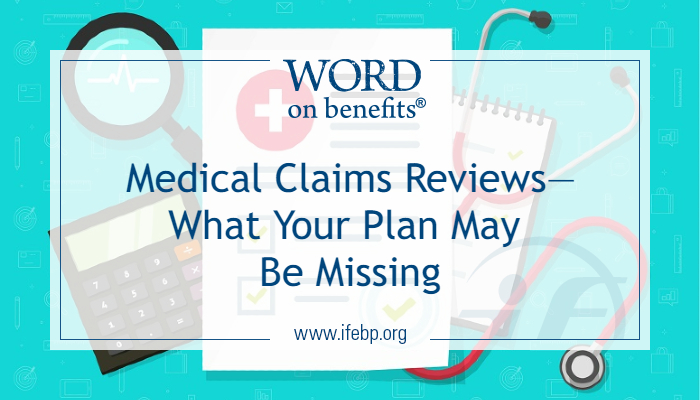

With thousands and thousands of codes that can be assigned to everything from the diagnosis of a patient’s condition to the facility where they receive care, there is plenty of room for error in medical billing. And it may never get caught—partly because billing has become so complicated and partly because patients, health plans and claims administrators may not have all the data they need to catch the errors.
That’s a problem because health care claims often represent big dollars, and benefit plan trustees and administrators have a fiduciary duty to spend those dollars prudently.
Medical claims billing—and the mistakes that may get missed—was the topic of a recent International Foundation webcast, “Devil Within—High-Cost Details Often Overlooked in Health Claims Billing.”
“Paying claims is really complex,” said webcast presenter Rich Henriksen, chief executive officer and founder of Nokomis Health, Inc., a health care claims accountability company based in Minneapolis, Minnesota.
An August 2021 Benefits Magazine article entitled “Follow the Money: Medical Claims Reviews” explains that there are more than 68,000 codes that “describe the myriad things that occur, supplies used, people involved and tests that are performed when a patient receives care . . . It is honestly easy to get it wrong.”
Other factors come into play. “Because it is so complex, and because there is a need for providers to increase their revenue, it’s very easy for providers to push the envelope,” Henriksen said. “There’s a lot of creative billing going on out there.”
Examples include:
- Upcoding. Emergency room (ER) services are coded with five levels with very clear guidelines on what services each level entails. Providers might assign a code to a claim, saying that a provided service was a level 4 (and, therefore, more expensive) when a review of the medical record shows that it should have been coded at a 2 or 3.
- Charges not properly supported by documentation. In the case of spinal surgeries, a neuromonitoring technician is typically present at every surgery to make sure that the patient’s nerves aren’t damaged during the procedure. Sometimes the facility files a claim that includes payment to the technician, but the medical record shows that the person providing the service wasn’t a qualified technician and therefore shouldn’t be paid.
- Double billing. Perhaps a provider performs a laparoscopic abdominal surgery and ends up also doing an appendectomy because they see the patient’s appendix is inflamed. The provider might bill twice for the laparoscopy by including it on two separate bills—one for the abdominal surgery and another for the appendectomy—when it should only be billed once.
These errors get missed because “there are very little checks and balances looking over the claim to the level that we think is really required to make sure that what is being billed is what was rendered,” Henriksen said.
Many health plans and third-party administrators do some kind of payment integrity checks, but those are usually audits of claims that have already been paid, and those audits typically involve only a sampling of the plan’s claims.
Plans may want to consider another option: conducting a medical claims review. These reviews can be conducted by insurers or outside vendors, and they involve scrutinizing each medical claim and requesting medical records for those that seem unusual. “The medical record is the source of truth,” Henriksen noted.
According to the Benefits Magazine article, trustees that want to contract with a claims review vendor should consider the following in their selection process.
- The service should not require an up-front investment or ongoing fee. Plans should instead look for vendors that charge a percentage of the amounts they recover, called a contingent recovery fee.
- Contingent recovery fees should be no more than 25% of the plan’s savings.
- All claims should be reviewed, not just high-dollar claims.
- The claims review should be conducted after the claims are adjudicated so that nothing is missed.
- Plans should avoid using postpayment claims reviews. They are frustrating for everyone, and medical providers are likely to resist collection efforts if they’ve already been paid.
- Plans should look for vendors that strive for minimal provider and member disruption and that have low appeals rates. *Using an independent claims review service may provide an unbiased view of billing practices.
International Foundation members can find more health care benefit management resources on our Access Instant Resources page.

Kathy Bergstrom, CEBS
Senior Editor, Publications at the International Foundation of Employee Benefit Plans
The latest from Word on Benefits:





Patrick Pine
Not sure I agree with the suggestion to pay vendors on a percentage of savings basis. I have used a vendor who looks at particular claim and provides a set fee to do the review as well as argue or negotiate with provider on our plan’s behalf. I much prefer that approach but this vendor is only one who seems to be doing it that way.